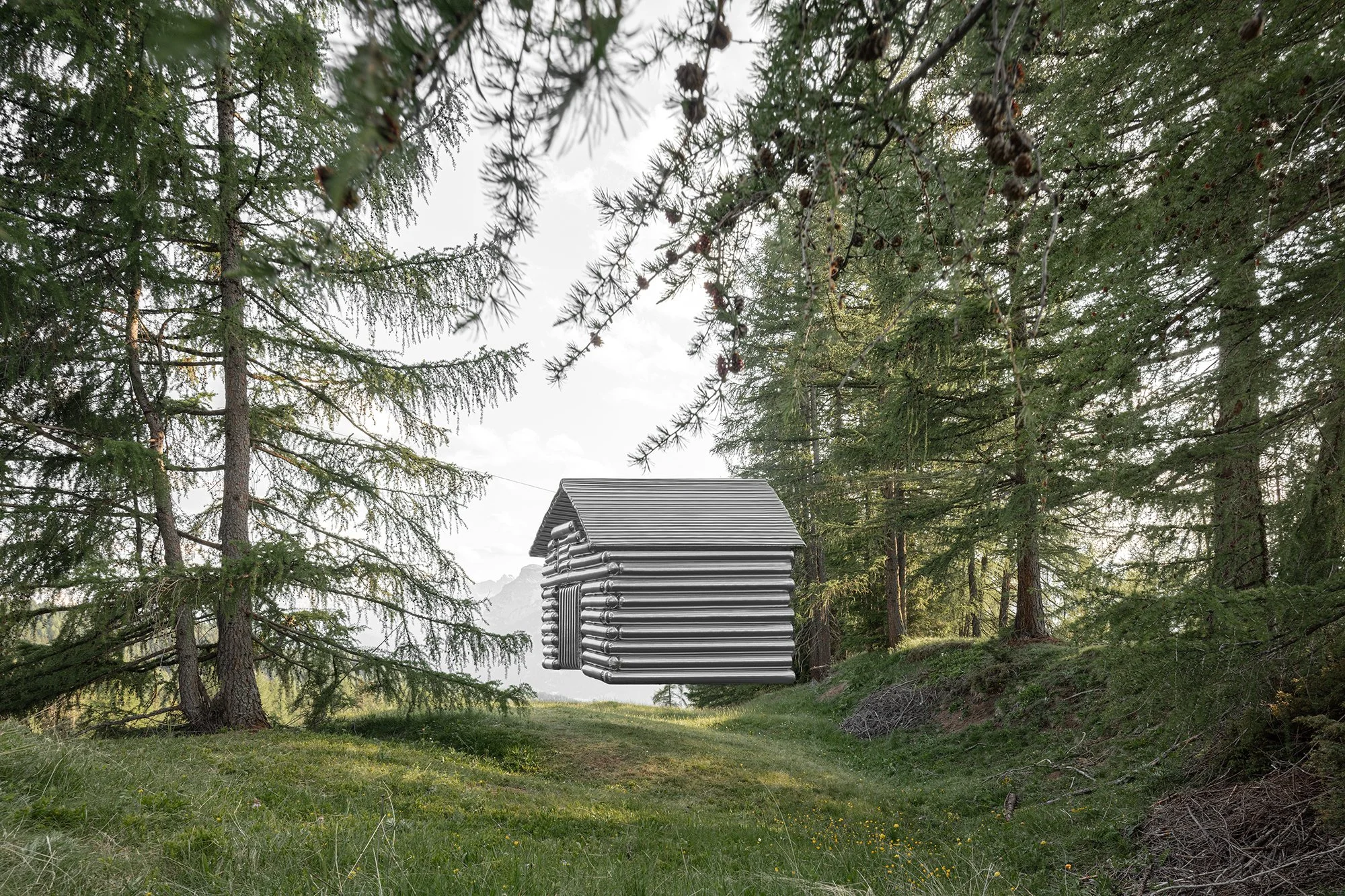Disintegration
Anthony Ko
Mountain huts and farmsteads are architectural evidence of humanity’s centuries-old presence in the mountains. The artist was inspired by the smallest of these Alpine buildings: the tablè. They were used to store tools and hay but today are often abandoned, despite the fact they often pop up when people think of life in the Alps. The work highlights the huts’ importance by building one from scratch – with a significant difference: it’s raised from the ground and made with reflective material. It doesn’t rest on foundations, it seems ready to fly away, and built using artificial material. The inflatable sculpture is slowly disintegrating, the structural elements are disjointed, a consequence of the current time’s instability and imbalance.
The work presented such technical and material problems that it was impossible to reinstall it. Thank you for your understanding.



Exhibit place La Crusc
Archaeological finds tell us these areas were already inhabited 8,000 years ago, from the Mesolithic onwards. Mountain life was hard, and things didn’t change in the successive centuries. The first Christians here didn’t build altars or practice fire worship, rather built a sanctuary to ask for nature’s clemency. Today, Santa Croce sanctuary is one of the Dolomites’ most iconic places!











